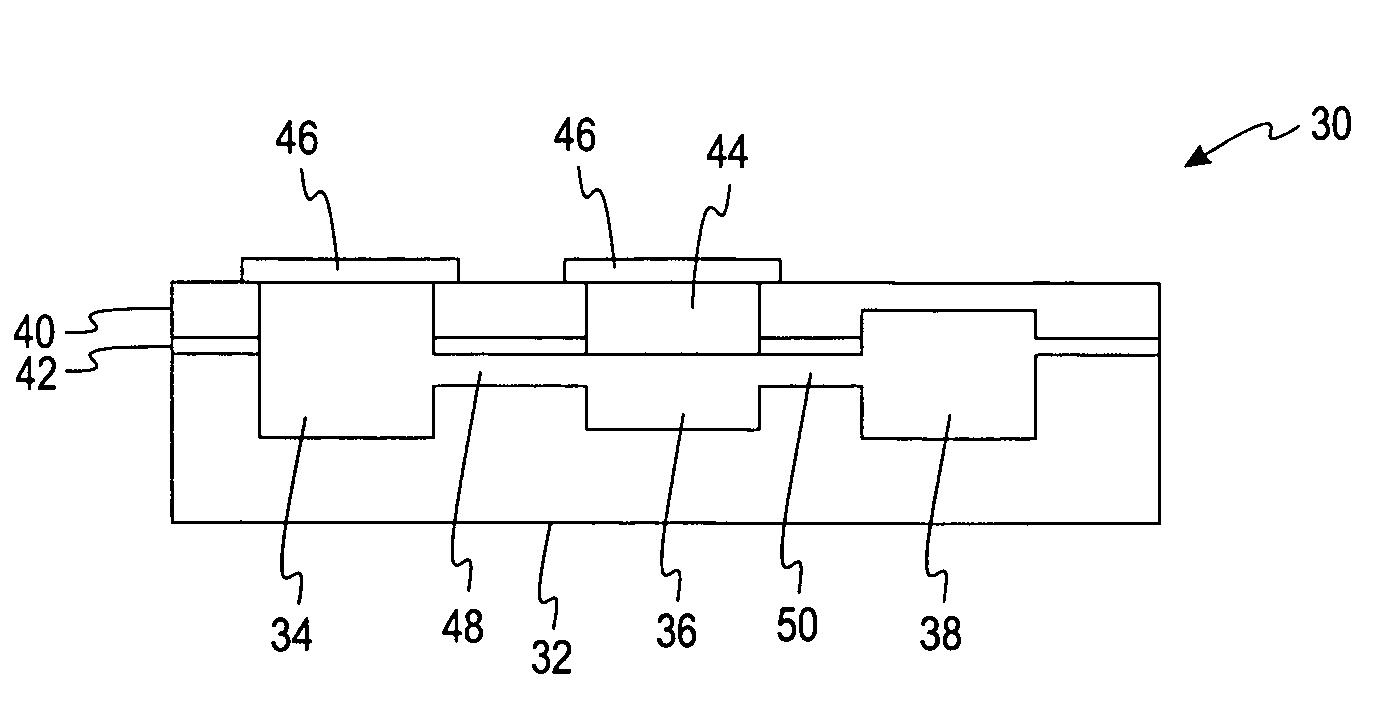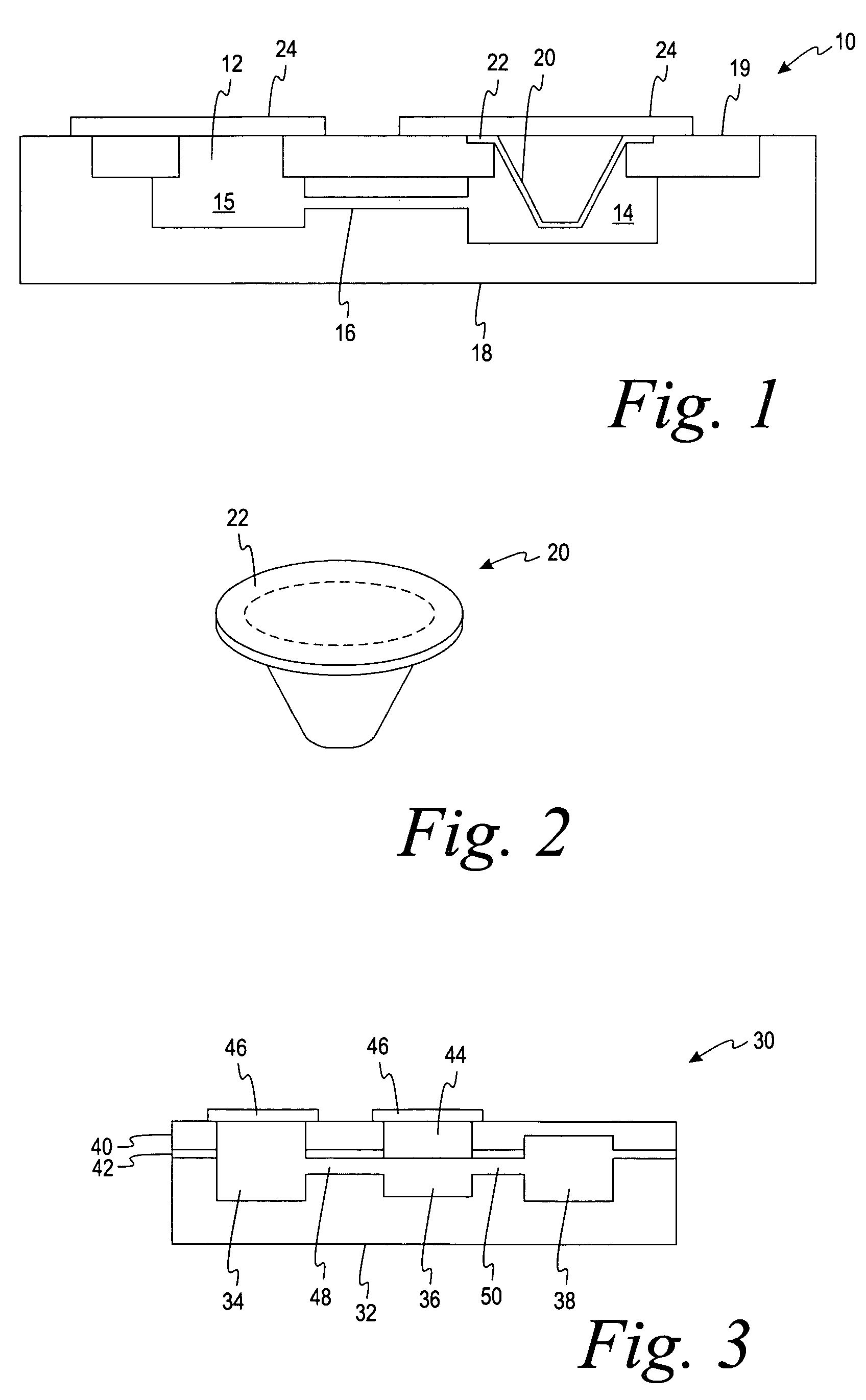Packaging of microfluidic devices
a microfluidic device and packaging technology, applied in the field of microfluidic devices, can solve the problems of inability to meet the needs of laboratory glassware, inability to accurately measure, and inability to migrate from the chamber, and achieve the effects of limiting moisture transfer, low affinity, and prolonging the shelf life of the devi
- Summary
- Abstract
- Description
- Claims
- Application Information
AI Technical Summary
Benefits of technology
Problems solved by technology
Method used
Image
Examples
Embodiment Construction
General Description of Microfluidic Devices
[0014]Microfluidic devices sometimes are referred to as “chips”. They are generally small and flat, typically about 1 to 2 inches square (25 to 50 mm square) or circular discs of similar size (e.g., 25 to 120 mm radius). The volume of samples supplied to the microfluidic chips are typically small, i.e., about 0.3 to 5 μL. The sample liquids are moved through a series of chambers interconnected by capillary passageways having widths in the range of 10 to 500 μm, preferably 20 to 100 μm. The minimum permitted depth of the passageways may be determined by the properties of the sample. For example, the depth typically will be at least 5 μm, but at least 20 μm when whole blood is the sample.
[0015]While there are several ways in which the capillaries and sample wells can be formed, such as injection molding, laser ablation, diamond milling or embossing. It is preferred to use injection molding in order to minimize cost while reproducing structura...
PUM
| Property | Measurement | Unit |
|---|---|---|
| Thickness | aaaaa | aaaaa |
| Mass | aaaaa | aaaaa |
| Fraction | aaaaa | aaaaa |
Abstract
Description
Claims
Application Information
 Login to View More
Login to View More - R&D
- Intellectual Property
- Life Sciences
- Materials
- Tech Scout
- Unparalleled Data Quality
- Higher Quality Content
- 60% Fewer Hallucinations
Browse by: Latest US Patents, China's latest patents, Technical Efficacy Thesaurus, Application Domain, Technology Topic, Popular Technical Reports.
© 2025 PatSnap. All rights reserved.Legal|Privacy policy|Modern Slavery Act Transparency Statement|Sitemap|About US| Contact US: help@patsnap.com


